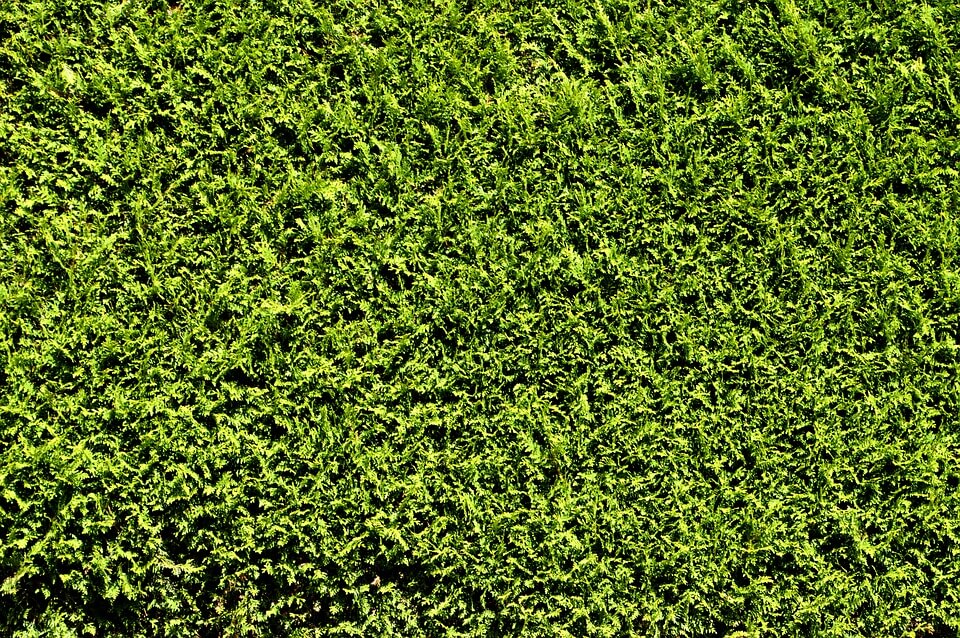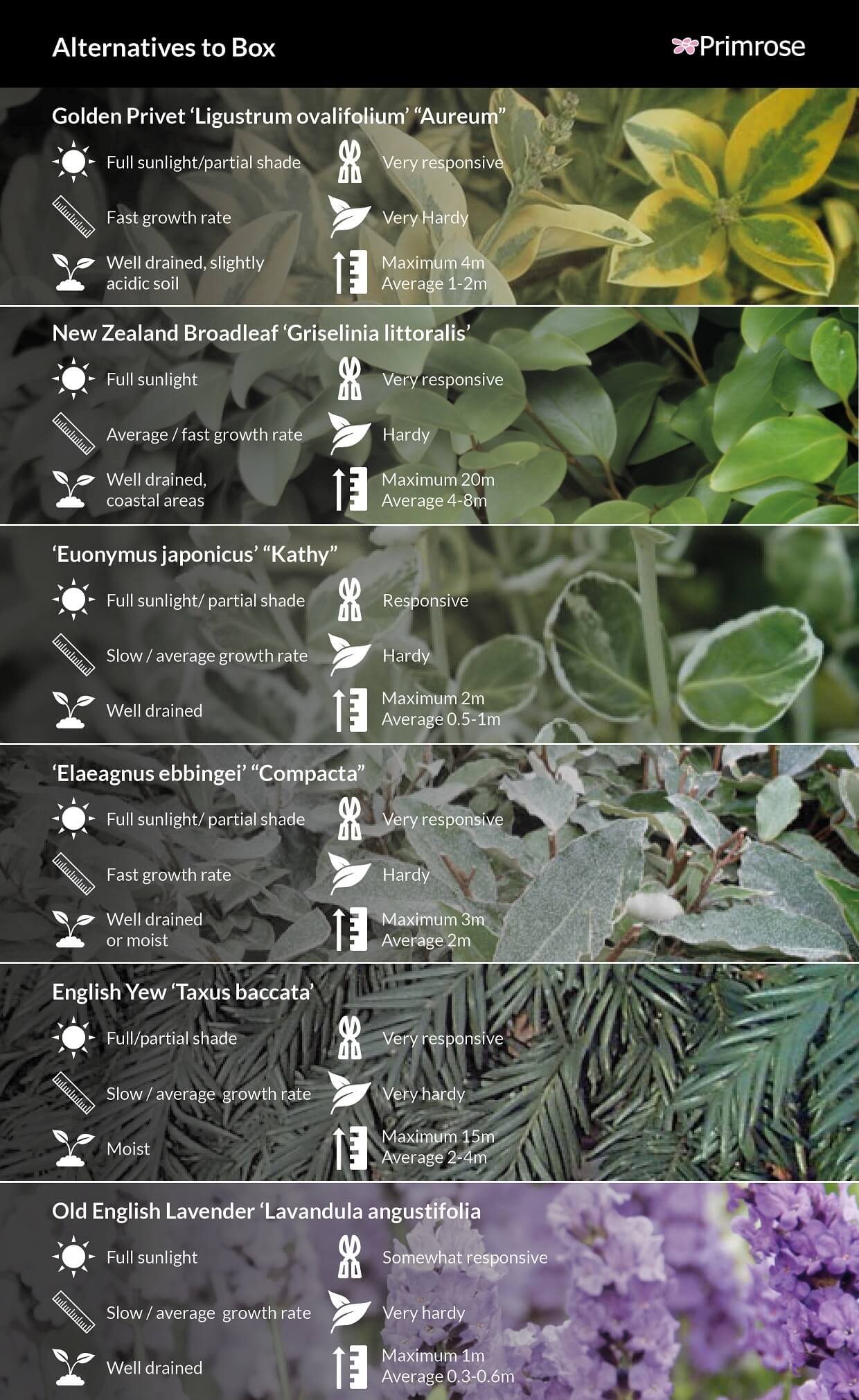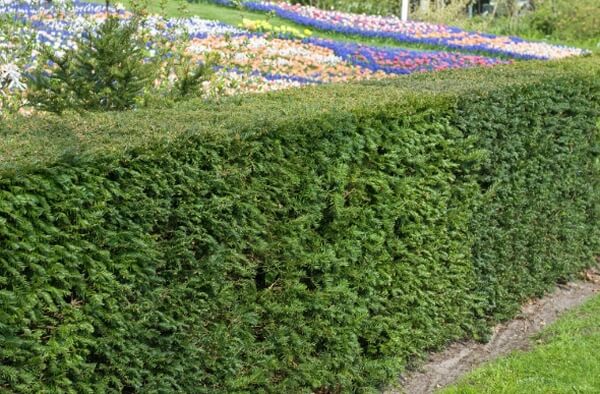
Forgoing box is a real shame as it possesses all the characteristics required for low maintenance natural hedging. It responds well to clipping, and is slow growing, often needing to be cut only once a year, with growth usually between 10 and 15cm. It is also frost resistant and native to the UK, being cultivated since at least Roman times. Sadly, due to the current box blight epidemic, box is no longer the premium option, as the disease can destroy years of work to which the gardener can do little to stop. However, using other plants can be seen as a great opportunity to experiment, which makes gardening so enjoyable in the first place. There are so many underappreciated alternatives that can produce stunning delineated gardens.
Obviously, no plant will be exactly like box and the shape (and colour) of your hedge could be very different. If you wish for a substitute for box, however, privet hedging (Ligustrum ovalifolium) is a highly popular choice that is extremely hardy and small leaved, although sadly fast growing; henceforth, it will need to be trimmed multiple times in the summer to encourage dense growth. As it is only semi-evergreen, there is also the possibility of the plant shedding its leaves in extreme bouts of cold. Another possibility is switching to artificial topiary that is visually identical to box, and virtually indestructible, although its shape is limited to the manufacturer’s designs.

Other worthy alternatives include broadleaf hedging, like the Griselinia littoralis, plus Euonymus and Elaeagnus hedging. The Griselinia is notable for its soft glossy leaves, average growth rate and responsiveness to clipping. The Euonymus is usually two-tone with cream bordering the edges of its otherwise green leaves, although it can variegate greatly in full sunlight. The plant is hardy and suitable for nearly all soil types, although will need maintenance to ensure denseness. The Elaeagnus is a great alternative as it is dense, hardy and responsive to clipping. It is also fragrant in the autumn with the emergence of white flowers.
One of the best natural species of natural hedging has to be yew hedging, like the Taxus baccata, commonly known as the English Yew or Common Yew; it is very hardy, average growing, dense and great for birds, which love its berries. For more colourful alternatives, lavender plants (Lavandula angustifolia) and sometimes heather, can be grown into hedges. Key for lavender is to cut it before it flowers, or otherwise it will lose its shape. It is great for wildlife, fragrant and evergreen.

Due to the box blight epidemic, the RHS Garden Wisley are currently trailing 25 alternatives to boxwood. The varieties that have performed well include such plants as the Kilworth Cream (Podocapus nivalis), Sunshine (Ligustrum sinense) and Tom Thumb (Pittosporum Tenuifolium). The team has found that the Podocapus versatile, and responsive to clipping; the plant itself can be described as extremely small leaved, and darker in colour than box. The Ligustrum is slow growing with vibrant yellow leaves, the Pittosporum purple and compact. Also of interest is how the Pittosporum is a source of food for animals in its native New Zealand and is thus hardy and responsive to clipping.
Do you have any experience growing hedges? We’d love to hear from you. Post in the comments below!
–
Jorge works in the Primrose marketing team. He is an avid reader, although struggles to stick to one topic!
His ideal afternoon would involve a long walk, before settling down for scones.
Jorge is a journeyman gardener with experience in growing crops.